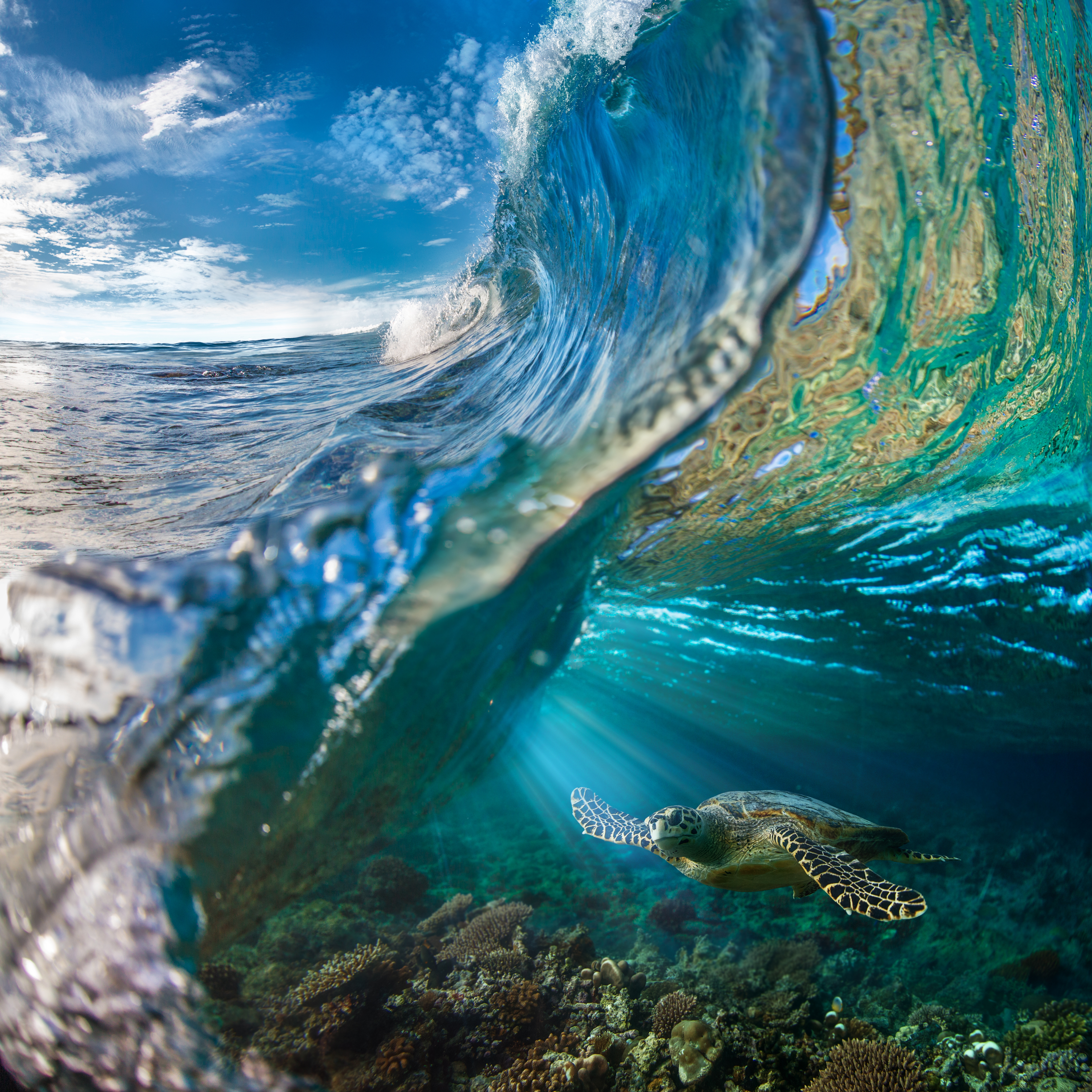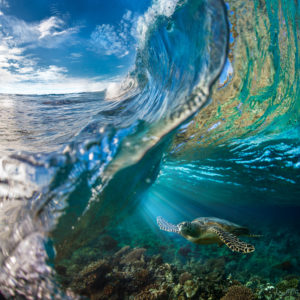

Green Sea Turtle (Chelonia mydas)
AKA: Pacific green turtle, black (sea) turtle
Green Sea Turtle (click on this link to watch)
While diving off the coast of Hawaii, I encountered multiple green sea turtles in the shallow areas around the shore. Adult green sea turtles are primarily vegetarians and feed on sea grass and algae. Juvenile turtles are reported to eat crabs and jellyfish, in addition to sea grass and algae. When fully grown, green sea turtles may weigh between 300 and 350 pounds, with one very large turtle reportedly weighing nearly 700 pounds.
The name “green sea turtle” refers to the color of its dermal fat (layer of fat beneath the skin). The turtle’s shell is typically brown in color, as in the video. In some parts of the eastern pacific, green sea turtles have shells that are reportedly olive to black. Greens sea turtles have also been reported to be one of the few turtles to leave the water for reasons other than to lay eggs. They range across the tropical and subtropical waters of the earth.
In subtropical areas and temperate areas, where shallow water temperatures during the winter are cold, green sea turtles may experience cold stunning. When this occurs, their hear rate and blood circulation decrease, they become lethargic, and barely move. They often appear to be “dead” but may be very much alive. If the turtle remains in a prolonged state of cold stunning, they may die. Being unable to swim also makes them vulnerable to various types of accidents or drowning. In 2013, there were a record number of turtles reportedly stranded by cold stunning along the Atlantic coast, but fewer in subsequent years. Along the Texas gulf coast, cold stunning does not occur as frequently and is not prolonged, but does occur. Warming sea temperatures may result in fewer cold stunning events, but may also result in other changes more detrimental to green sea turtles.
Green sea turtles are listed as endangered by the IUCN (International Union for the Conservation of Nature), and the U.S. Fish and Wildlife service lists breeding populations along the Florida and Pacific coast of Mexico as endangered. Divers, swimmers and snorkelers may swim and photograph the turtles, but are prohibited from harassing or capturing green sea turtles and their eggs.
Here are a few links for more information:
http://www.fws.gov/northflorida/seaturtles/turtle%20factsheets/green-sea-turtle.htm
http://www.fws.gov/northflorida/seaturtles/seaturtle-info.htm
http://animals.nationalgeographic.com/animals/reptiles/green-turtle/
http://www.conserveturtles.org/seaturtleinformation.php?page=green